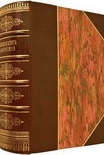Kerry Packer Michael Stahl (good books for 7th graders .txt) 📖

- Author: Michael Stahl
Book online «Kerry Packer Michael Stahl (good books for 7th graders .txt) 📖». Author Michael Stahl
In the end, in May 1979—just two years after the cricket world first heard of Packer, the pariah—the warring sides agreed to a truce. What emerged in time for the 1979–80 cricket season was a sort of hybrid of the two factions, bringing together the players, marketing ploys, one-day and night-time matches and a vastly upgraded standard of television broadcasting of the game.
On Packer’s Nine network, naturally. Live and exclusive.
KP TO A TEE
Before World Series Cricket came smashing through our television screens, Kerry Packer could have been just another Australian media mogul. He was by no means the top Aussie media tycoon on people’s minds at that time.
Rupert Murdoch was making headlines in the US through the mid-1970s, snapping up the New York Post newspaper and the magazine group publisher of The Village Voice. In January 1977, Murdoch was cartooned on the cover of TIME, a kangaroo King Kong flogging papers from New York’s skyscrapers.
Murdoch’s scale of operation would continue to outstrip Packer’s, but their paths would be quite similar. And the rival scions who had, between them, negotiated the $15 million sale of the Telegraph in the back seat of a car in 1972, were destined to butt heads almost a quarter of a century later—on a sporting field.
Packer’s offloading of the Telegraph titles was a case of Kerry fixing his eye on the ball. He had never cared for newspapers; he read them with difficulty, if at all. In television, Packer could play to his strengths.
Imagine making a career out of sitting in front of the telly, eating burgers, swigging one’s preferred beverage and watching sport—cricket, golf, footy, whatever. For Packer, television and sport wasn’t just a career, but a calling.
In following it, he would make millions. And along the way, make Nine a weekend institution for sports fans, revolutionise an entire game and change live sports broadcasting forever.
The tee shot occurred in 1975. In his own right, Packer was a more than capable golfer. At the Royal Sydney Golf Club, his name is listed as the winner of the 1965 Herbert Marks Trophy, and of the 1970 Royal Sydney Cup. At the time of the latter event, he played off a handicap of five. But he fell out with the Royal Sydney, in snooty Rose Bay, and took up at The Australian Golf Club, in slightly less salubrious Kensington, beneath the flight path of Sydney Airport.
The Australian Open is said to be the second oldest golf championship in the world (after The Open Championship in Scotland). It was first played in 1904, predating the US Masters at Augusta by 30 years. The Australian Open changed venues each year to take in courses around the nation, but in 1975 it was to be played where it had all begun 71 years earlier, at The Australian in Sydney.
Despite the jet-set image and the draw of golf’s ‘Big Three’—Gary Player, Jack Nicklaus and Arnold Palmer—the Australian Open was in the rough. In 1975, it was in desperate need of a title sponsor. Packer pitched in $1 million in prize money, under the banner of The Bulletin, and proposed that the then-Australian Golf Union, owner of the event, grant him television rights for three years.
But KP was already looking farther down the fairway. Jack Nicklaus had once referred to the Australian Open as the world’s fifth major, putting it in lofty company with the venerable British and the three big US tournaments. Packer believed that a permanent home, as the US Masters enjoyed with Augusta, would cement the Open’s prestige.
The AGU had been founded in 1898 in Melbourne. It reeked of southern-city Establishment, and bristled at Packer’s Sydney-centric vision of the Open. But Packer tipped what was estimated as a further $2 million in the direction of Nicklaus, by then a budding course designer, to transform The Australian into a world-class course.
Packer streamlined the way in which players were paid, proposing a one-size-fits all payment (reportedly $6000 a head), plus air fares, accommodation and Packer-sized hospitality. Several were billeted at Cairnton, Packer’s Bellevue Hill estate.
KP may have had good reason to keep a close eye on the invoices. He’d already figured on losing money on the Open. But in the end, he and the Nine team would learn lessons in live broadcasting that later proved priceless.
A network of buried cables, established during the wholesale redesign of the golf course, allowed for far more cameras than had been seen before; advertising and sponsorship opportunities expanded accordingly. With colour, drama and unprecedented detail, the telecast rated well. Nicklaus’ victory (on the course he had designed) generated plenty of international publicity.
Indeed, Nicklaus would win three of the four Australian Opens played under Packer’s patronage (Australia’s David Graham foiled a hat-trick in 1977), after the original three-year deal was extended into 1978. For the duration, the AGU had shifted its headquarters to Sydney.
All of that would change quickly after the 1978 tournament, when the AGU insisted on a return to a Melbourne course for 1979. Packer, contemplating the scale of his investment in The Australian, was understandably miffed.
Packer had to walk away from the Australian Open, but he did not abandon The Australian Golf Club. Veteran golf writer Peter Stone, writing in The Sydney Morning Herald, estimated that, over the years, Packer personally contributed some $18 million to the ongoing benefit of the course.
Later it was reported that Kerry had also approached the Lawn Tennis Association of Australia with an offer of $1 million, to secure five years’ television and marketing rights for the





Comments (0)